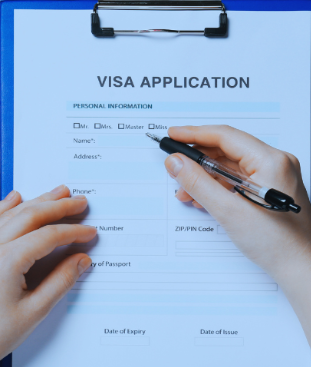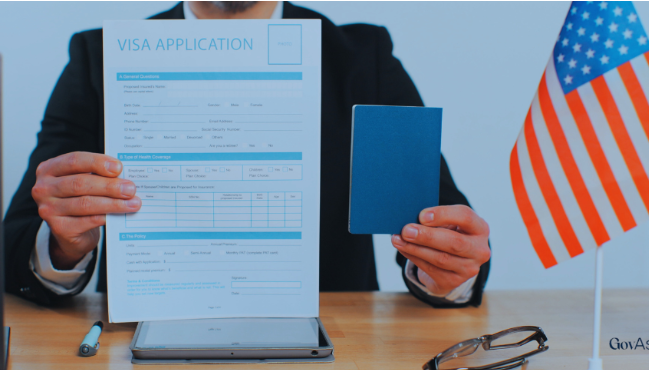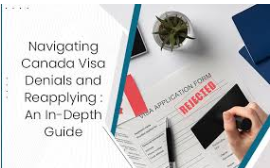Applying for a US visa can be a daunting task, especially with the many different types of visas and stringent application processes. Whether you’re planning a short visit or seeking long-term residency, understanding the intricacies of the application process is crucial to avoid common pitfalls and ensure a smooth experience. This guide will walk you through the essential steps, common challenges, and tips to increase your chances of obtaining a US visa.
Understanding the Different Types of US Visas
Before starting your application, it’s essential to know which type of US visa suits your travel purpose. The US offers various visa categories, including tourist visas (B-1/B-2), student visas (F-1), work visas (H-1B), and immigrant visas (green cards). Each category has its specific requirements, eligibility criteria, and application procedures.
For those visiting the US temporarily for business or tourism, the B-1/B-2 visa is the most common. If you’re traveling for work or study, you may need an H-1B or F-1 visa, respectively. Understanding the differences between these visas is the first step in ensuring that your application is directed towards the correct category.
The Application Process: Key Steps
The process of applying for a US visa typically involves several key steps:
- Determine the Appropriate Visa Type: As mentioned earlier, knowing which visa you need is crucial. Visit the US VISA FAQ page to get detailed information about each visa type and its requirements.
- Complete the DS-160 Form: The DS-160 form is the online nonimmigrant visa application form that must be completed by all applicants. It requires personal information, travel details, and sometimes additional documentation. Be sure to fill out this form accurately, as any mistakes could lead to delays or denial.
- Pay the Visa Application Fee: Once the DS-160 form is submitted, you must pay the visa application fee. The fee amount varies depending on the visa type. This payment is non-refundable, so ensure you choose the correct visa category before making the payment.
- Schedule Your Visa Interview: After paying the fee, you’ll need to schedule a visa interview at the US embassy or consulate in your country. The interview is a crucial part of the application process, where you’ll be asked about your travel intentions, financial stability, and ties to your home country.
- Attend the Visa Interview: On the day of your interview, bring all required documents, including your passport, DS-160 confirmation page, visa fee receipt, and any supporting documents. Answer the questions honestly and confidently. Consular officers assess your eligibility based on your answers and the documents provided.
- Wait for Visa Approval: After the interview, your application may be approved, denied, or placed under administrative processing. If approved, you’ll receive your visa within a few days. If denied, you may want to explore the REASONS FOR ESTA VISA DENIAL to understand what might have gone wrong.
Common Reasons for Visa Denial
Despite careful preparation, some visa applications are denied. Understanding the common reasons for denial can help you avoid mistakes and increase your chances of approval.
- Incomplete or Incorrect Application: One of the most common reasons for visa denial is submitting an incomplete or incorrect application. Double-check all information before submitting your DS-160 form and ensure that all required documents are in order.
- Insufficient Financial Proof: The US government needs to ensure that visa applicants have sufficient funds to support themselves during their stay. If you cannot provide adequate financial proof, your visa application may be denied.
- Lack of Ties to Home Country: Visa officers need assurance that you intend to return to your home country after your visit. If you cannot demonstrate strong ties, such as family, employment, or property, your visa might be rejected.
- Security Concerns: Any indication that you pose a security risk to the United States can lead to visa denial. This could include a criminal record, past immigration violations, or suspicious travel history.
- Previous Visa Denials: If you have been denied a US visa in the past, it could affect your future applications. It’s crucial to address any issues that led to the previous denial before reapplying.
If your visa application is denied, don’t lose hope. Review the specific reasons for denial provided by the consulate, and take corrective action before reapplying. The REASONS FOR ESTA VISA DENIAL page offers valuable insights into common pitfalls and how to avoid them.
Tips for a Successful Visa Application
To increase your chances of a successful visa application, follow these tips:
- Prepare Thoroughly: Gather all necessary documents well in advance and ensure that your DS-160 form is accurately filled out.
- Be Honest and Consistent: During the interview, answer questions honestly and consistently with the information provided in your application.
- Demonstrate Strong Ties to Your Home Country: Provide evidence of your intent to return home, such as employment letters, property ownership, or family obligations.
- Stay Calm and Confident: The visa interview can be nerve-wracking, but staying calm and confident can make a positive impression on the consular officer.
Conclusion
Applying for a US visa can be a complex and nerve-racking process, but with careful preparation and understanding of the key steps, you can significantly increase your chances of success. Make sure to utilize resources like the US VISA FAQ to stay informed about the process and be aware of common REASONS FOR ESTA VISA DENIAL to avoid common mistakes. By following this guide, you can navigate the US visa application process with confidence and ease.















